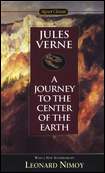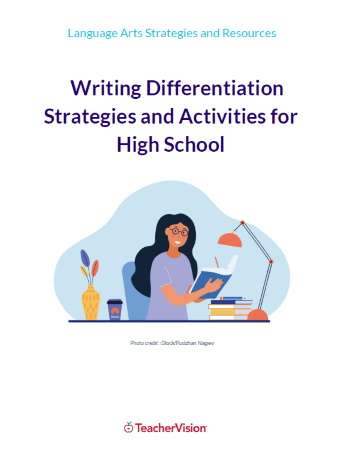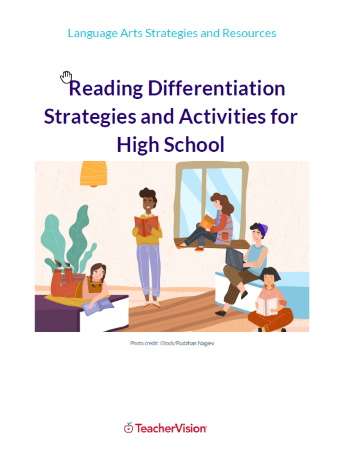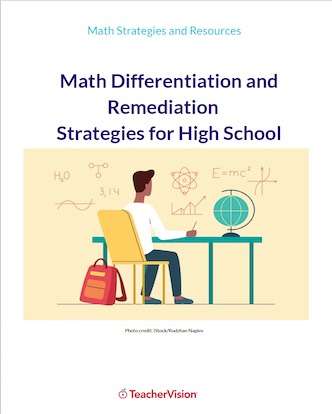Journey to the Center of the Earth
by Jules Verne
- Overview
- Before Reading the Novel
- While Reading the Novel
- After Reading the Novel
- Extended Learning
- Bibliography
- About the Guide Authors
- About the Guide Editors
- Buy this Book!
Enter promo code TEACH for 15% off.
Journey to the Center of the Earth by Jules Verne is a novel that literally plunges the reader into the center of the earth through vivid descriptions, detailed explanations, and the "eyewitness" accounts of the narrator. On the most basic level, Journey is an adventure story – a tale of the obstacles, encounters, and wonders. The eccentric scientist Professor Hardwigg finds directions to the center of the earth in an old book and sets out, along with his nephew Henry and the guide Hans, to Iceland where they find the mountain and the shaft that allows them access to the depths of the earth. On a deeper level the story can be seen as man's journey into himself, always probing deeper for what lies at his center.
Written in 1864, this novel is a remarkable look into the future. Although students will recognize scientific predictions that were based on inaccurate assumptions, language that is somewhat antiquated, and a beginning that proceeds at a leisurely pace, they will appreciate Verne's ability to weave into the story information and questions about science that will keep them in a state of curiosity and wonderment. Since the novel moves at a slower pace than action-packed thrillers like Star Wars on which today's students have been raised, a good strategy to keep students involved in the novel is to provide them with many opportunities to predict what will happen and to encourage them to look for clues about what is to come. Students will gradually begin to understand how far ahead of his time Verne was in comprehending science and in basing his writings on some sense of the possible. They will see why he is considered by many to be the father of science fiction.
Verne extrapolated his adventures and inventions from scientific fact and what was known in the world at the time. Verne's emphasis on then current scientific knowledge makes his work unique. Laying a carefully documented scientific foundation for his fantastic adventure stories, he forecast with remarkable accuracy many scientific achievements of the 20th century. He anticipated flights into outer space, submarines, helicopters, air conditioning, guided missiles, and motion pictures long before they were developed. This teacher's guide encourages student participation through activities that encourage students to interact with the novel and think about the science involved in the novel.
Students who are mature, avid readers and like to be challenged with new information and ideas are the ideal audience for this novel. Introducing them to exciting minds such as Verne's gives them a new perspective on today's advances in writing and science, helping them understand that contemporary society did not invent information and imagination. Additionally, students learn that even prior to the age of computers humans possessed depth and breadth of knowledge. Verne was curious, fascinated by the world, and always wanted to know more. He shared what he learned with others through the medium of the novel. His other goal, to entertain his readers, was met through the construction of plotlines that continuously move readers through the work and the adventure. Journey to the Center of the Earth is not only a model of well crafted writing but a prototype of the kind of adventure stories that are so popular today in movies and in books.
A focus of this teacher's guide is to place students in the exciting role of explorers, with you acting as supporter and guide. Its goal is to help establish an interactive classroom in which students share written responses in small groups and then with the whole class, emphasizing discovery and involvement. When students raise questions about the time period, the background of the author, the unusual vocabulary and concepts, you can share information or encourage students to locate it themselves through such resources as the Internet. Sharing information with students as they raise questions is more effective than overwhelming them with information out of context. Stopping for short research sessions can whet their reading appetite.
Likewise, when students debate issues and opinions they are encouraged to return to the text to support their assertions. Although this guide has an abundance of activities and questions, the intent is to support you and your students' choices. It is not important or even desirable to have students respond to every chapter. More realistically, you might ask students to respond to one suggestion for every four or five chapters read. Students can share their work in small groups, raising the interest of other students. It is important to vary the activities and keep the work interesting by letting students use their imaginations as they demonstrate their involvement in the book.
The guide is divided into three sections. The first section provides background information to assist in answering questions. The Overview contains a brief biographical sketch of Jules Verne and a list of background information on what was happening in the world of science in the middle of the nineteenth century. The second or teaching section of the guide contains activities arranged for use either before, during, or after reading the novel. The third section provides ideas for extending the students' learning beyond the novel.
OVERVIEWSome Notes on the Novel
The structure of this novel is simple, developed mainly through a single linear plotline told in retrospect. Students will find it easy to follow what is happening. Also, the relationships among the three main characters are easy to understand since they are seen close-up with no other characters to complicate the focus. The relationship between Harry (Henry) and Professor Hardwigg changes and grows in this plot-dominant novel, allowing examination of characterization of subtleties. The Afterword in the Signet Classic edition suggests an interesting approach to analyzing Verne's characters as representations of the mind, the body, and the soul.
What does take reader energy, of course, is the stunning array of scientific information. Many questions are raised creating an urge to run to an encyclopedia or the Internet to learn about more fascinating information or check its accuracy. Journey to the Center to the Earth makes the reader want to know and understand more. This was part of Verne's purpose; he viewed the novel as equal parts entertainment and instruction.
Historical Commentary
In the mid-19th century, during Verne's lifetime, exploration to unknown lands was in vogue. During this period, the interior of Africa, the geographical and magnetic poles, and much of Central and South America were little known by Europeans. Well known explorers such as Sir Richard Burton and Henry Morton Stanley and David Livingston were exploring above the earth's surface as their fictional counterparts Professor Hardwigg and Harry were exploring below.
Also, Charles Darwin was gaining attention for his theory of evolution; this is touched on by Verne in this novel. New frontiers were opening while "new ideas about the planet's core, prehistoric man, dinosaurs, and early life on earth battled religious intolerance and Barnum-like hoaxes" (Afterword 292). The Afterword of this Signet Classic edition explains that Verne "was able to adapt nearly every important element in the story's action from contemporary, intellectual, literary, scientific, and geographical thought" (291). The world during Verne's lifetime was a ferment of new ideas and was exploding with new knowledge. Verne captures that spirit in Journey to the Center of the Earth.
Verne's Life
Jules Verne was born in 1828 in France and died in 1905, spending the majority of his life writing over eighty books. He was born to a father who was a lawyer and to a mother who came from a family of ship builders and sea captains. The oldest of five children, Jules was trained in law but was more interested in writing opera librettos and plays, much to the chagrin of his father. After his first book was published in 1863, he devoted his life to writing, although geography and travel remained dominant interests.
Verne had no formal training in science. His passion was geography; everything else he learned from his reading, which included about fifteen newspapers a day. He took voluminous notes giving him a good sense of the emerging knowledge in many fields. He was very modest about his ability to predict inventions, saying he only extended what was already happening at the time.
Summary of the Novel
After decoding a scrap of paper he found in an old book, Professor Hardwigg decides to undertake the Journey to the Center of the Earth that the paper says is possible. Brushing aside the concerns of his nephew Harry about the temperature of the earth's interior, the Professor insists that Harry accompany him on the journey. Gathering needed supplies, the pair depart two days later for Mt. Sneffels in Iceland, the point through which they can gain access to the core of the earth.
With the Icelander Hans as their guide, the party undertakes the rugged journey up to the mountain, stopping to rest along the way at the homes of Icelanders. Through these contacts they learn much about Icelandic culture. Once they reach the mountain, the three descend into the crater and after several days determine which of three shafts is the one through which they can make their descent. Aided by Hans' s knowledge of how to use ropes they travel downward more than a mile the first day. The Professor explains that they are now at sea level and the real journey is just beginning.
At the bottom of the shaft, they come upon four crossed paths that they can follow and the Professor quickly chooses one. After several days trekking and almost out of water, they must retrace their steps because the path dead ends. Finally returning to the place of the four crossed paths, Harry collapses and assumes they will return to the surface. Although the Professor shows concern for Harry, he asks for one more day to find water before they abandon the journey. They select a different route and soon discover water.
Days later they find a well-like shaft through which they descend to twenty-one miles below the surface of the earth. Continuing to descend rapidly, Harry goes ahead of the others and soon finds himself alone. In desperation he retraces his steps but becomes hopelessly lost. It is only after much suffering four days later that Harry is reunited with his uncle Hans.
As Harry is recovering, he hears the sound of waves and thinks he sees light. In fact, the three have arrived at what they name the Central Sea, a vast underground body of water. At this point in the novel (Chapter 27) scientific wonders appear regularly. Exploring the area around the sea, the travelers find what looks like a forest but is actually forty foot mushrooms. The Professor explains to the astounded Harry how it is possible for plants to live beneath the earth. They continue their exploration of the area, finding bones of mastodons and other evidence of plant and animal life.
The Professor decides that they must cross the ocean to continue their descent even further into the earth. Lashing together wood mineralized by the sea to create a raft, the clever Hans rigs up a rudder. Once underway they are surprised by how quickly the raft moves. Harry has been given the job of keeping a good record of his observations. He drops a hook and soon a fish is caught, an ancient species long extinct in the world above. Harry daydreams about huge animals and plants, visualizing the evolution of the earth and its inhabitants.
The Professor becomes impatient because the sea is so much larger than he expected, and they are no longer descending. Trying to learn the depth of the sea, the Professor attaches a crowbar to a cord and throws it overboard. The cord runs out at two hundred fathoms, and the retrieved crowbar bears marks that look like teeth bites. Days later two huge monsters surface, battle, and almost swamp the raft. Continuing on, the three spot what they think is another giant monster but discover it is an island with a boiling water geyser. Harry suggests that there must be an internal heat source, but the Professor refuses to hear anything that refutes his own theory.
The next morning a storm strikes with fury and rages on for several days. The explorers tie themselves and their gear to the raft to avoid being tossed into the sea. A fire ball jumps onto the raft, destroys the mast and sail, and threatens them with its electric power.
The raft is eventually cast up on a rocky shore in the midst of the storm and Hans carries Harry to safety. As the storm dies down they find to their dismay that they have been carried back to the same shores from which they left. The Professor is enraged and insists on repeating the sea part of their journey. Exploring this area which is farther along the coast than their starting point, the Professor and Harry find enormous shells as long as fifteen feet and encounter a huge field of bones. Harry thinks the bones might contain the whole history of animal life. The Professor is delighted when they find a human skull. Harry shares his understanding of the importance of his uncle's find by describing what was happening in the world of paleontology or the science of fossil life. He discusses the views in Europe at that time that man's origins were even more ancient than than been previously believed. Then the two find more and more skeletons and wonder if these humans always lived beneath the earth or had ever lived on it.
Continuing their explorations they come across a beautiful forest of ferns and pines lacking color. They spot gigantic animals such as elephants and in the distance see a twelve-foot tall human being. Afraid of confrontation, they leave the area with many questions about man's origins. As they retrace their steps to the beach and the raft, Harry spots a rusted dagger which the Professor believes is from the sixteenth-century. He thinks it was probably used to carve an inscription on the rocks, and they find the initials A. S. carved beside the entrance to a dark and gloomy tunnel. With evidence that Arne Saknussemm has traveled this way, they enter the passage only to discover that it is blocked by solid granite.
The three decide to blast their way into the tunnel. They set the charge and retreat to the raft. The explosion opens a chasm that appears to be swallowing the Central Sea. They are thrown down on the raft and swept along with the rushing waters. Harry estimates their speed to be at least one hundred miles an hour as they are drawn deeper into the blackness of the center of the earth. Their fall is stopped by what appears to be a water spout.
As Harry half dreams, he thinks the raft has landed and he is in a small cave. A crocodile-shark monster and a huge ape come towards him, stop when they see each other, and engage in fierce battle. As the survivor comes towards Harry, he wakes and realizes he is still on the raft but that it is now ascending as the waters are pushed up a narrow shaft. Harry is consumed by hunger but the rising temperature in the shaft becomes his main concern, and the party soon discover that the liquid beneath the raft is boiling hot. The Professor explains that an eruption is about to take place, and they are on top of the lava flow hurtling towards the earth's surface.
Harry awakes to find Hans supporting him on a mountainside. While making their way down, they learn from a young shepherd that they are on the island of Stromboli in Italy.
Once back in Germany, the three are treated like heroes and the Professor's achievements are recognized.
BEFORE READING THE NOVELAlthough the plot of this novel is linear and easy to understand and the language only occasionally challenging, getting into the novel may be difficult for some students. The pace of the plot is slower than plots of contemporary science fiction novels and movies.
Read the first several chapters aloud to assist students in familiarizing themselves with Verne's style, language, and pace. Mature readers then should be able to read the novel with no trouble. In order to get students involved in and thinking about the issues, the plot, and the setting of the novel, select several of the following activities or questions for student oral, written or artistic response.
1. If you could be an expert on anything in the world, what would it be? To what lengths would you go to gather information?
2. If someone told you they would take you miles down into the earth, how would you react? What would be your biggest concerns?
3. Some of the earlier parts of the novel take place in Iceland. What do you know about Iceland? What are your impressions of the country?
4. What do you know about the center of the earth? What theories have you heard about the composition of the earth's core?
5. When you think of the center of the earth what images, colors, and scenes do you see? What would you expect it to look like? Draw a picture or create a model of your image of the center of the earth.
6. If you were going on a journey or an adventure, what would you have to do to get ready? How would you know what to take?
7. What would be too scary for you to do - what is your limit? Would you be willing to go up in space; beneath the ocean?
8. What were your greatest childhood fears? Did they have to do with the dark, with heights, with speed, with going downhill rapidly, with monsters or very large beasts, with being caught in a natural phenomenon such as a tornado? Share your fears and tally the class's fears to see what most people consider scary.
9. Create the most fearful scenario you can, based on the class's tally of fears. Illustrate it, and then share it with your classmates. As you read Journey to the Center of the Earth, compare your ideas of what is scary to what Harry experiences.
10. If your parents or some one else whom you trust and love wanted you to go on a hazardous journey, how would you react? Compare your reactions to Harry's as you read the novel.
11. What do you know about the plant and animal history of the world? In groups piece together what you know about the earth's early evolution and the eventual extinction of some animals and plants.
12. In groups, create a collage from magazines showing what you imagine the center of the earth to be like. Use words as well as pictures.
13. How is a journey different from a trip? What journeys have you taken? Think of a journey as not merely physical, but also as a life-changing experience, accomplishment, or series of events. Or, perhaps your journey is in your imagination. Tell the story of your journey to the class or a small group.
14. In what ways might it be valuable for us to know more about what the inside of the earth is like?






